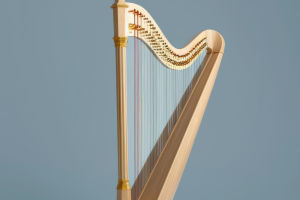The violin is an expressive and versatile instrument, capable of evoking a wide range of sounds and emotions.
It has been a cornerstone of classical music for centuries, yet its influence stretches far beyond the concert halls into popular and contemporary genres.
Its rich history, diverse playing techniques, and the unique sound it produces make it a remarkable instrument to study and play.
The violin has its origins in 16th-century Italy, where it was developed by luthiers like Andrea Amati. Its design was influenced by the viol, a stringed instrument used during the Renaissance and early Baroque periods.
The evolution of the violin marked the beginning of a new era in string instruments, with its smaller size, higher pitch range, and more powerful resonance. Over the centuries, it has been refined and perfected, with makers such as Stradivari and Guarneri becoming legendary figures in the world of instrument crafting.
What sets the violin apart from many other instruments is the way it produces sound. Unlike a piano or a wind instrument, the violin is played by drawing a bow across its strings, which are typically made of steel or synthetic materials.
The bow itself is strung with horsehair, and it is the friction between the bow and the string that generates the vibrations that produce the violin's sound. The player can vary the sound by changing the pressure, speed, and angle of the bow, allowing for an incredible range of dynamics and tone colors.
In addition to the bowing technique, violin players use their left hand to press the strings against the fingerboard, changing the pitch of each note. This technique, known as fingering, requires a great deal of precision and control, as there are no frets to guide the player's fingers.
The violin features four strings, each tuned a perfect fifth apart: G, D, A, and E. Each string can be played at various pitches by altering the position of the fingers, which is why violin playing is often described as a highly intuitive and expressive art form.
The violin is celebrated for its emotional depth and capacity to express a wide range of moods. From the hauntingly beautiful melodies of a solo performance to the powerful harmonies in an orchestral setting, the violin can evoke everything from joy and triumph to sorrow and melancholy.
The instrument's voice has a uniquely human quality, capable of mimicking the subtleties of the human voice in ways that few other instruments can. One of the most challenging aspects of learning the violin is mastering the intonation. Since the instrument lacks fixed pitch markers like frets or keys, the player must rely on muscle memory and a keen ear to find the correct pitches.
This requires years of practice and a deep understanding of music theory. The violin is also notorious for its physical demands, requiring players to develop strength and stamina in their arms, fingers, and shoulders. The ability to play with precision while maintaining a smooth, flowing sound takes time and dedication.
The violin has a rich repertoire that spans centuries of music. It is a staple of classical music, with composers like Johann Sebastian Bach, Wolfgang Amadeus Mozart, and Ludwig van Beethoven writing some of their most famous works for the instrument. The violin is also a prominent feature of chamber music, duets, and concertos, often taking the lead role in solo performances.
Many famous violin virtuosos have shaped the history of the instrument. Names like Niccolò Paganini, Jascha Heifetz, and Yehudi Menuhin are synonymous with exceptional technique and artistic mastery.
The violin's versatility, combined with its deep emotional resonance, ensures that it will continue to be celebrated for generations to come!
8 Facts You Didn't Know About The Violin
Video by Things you didn't know


